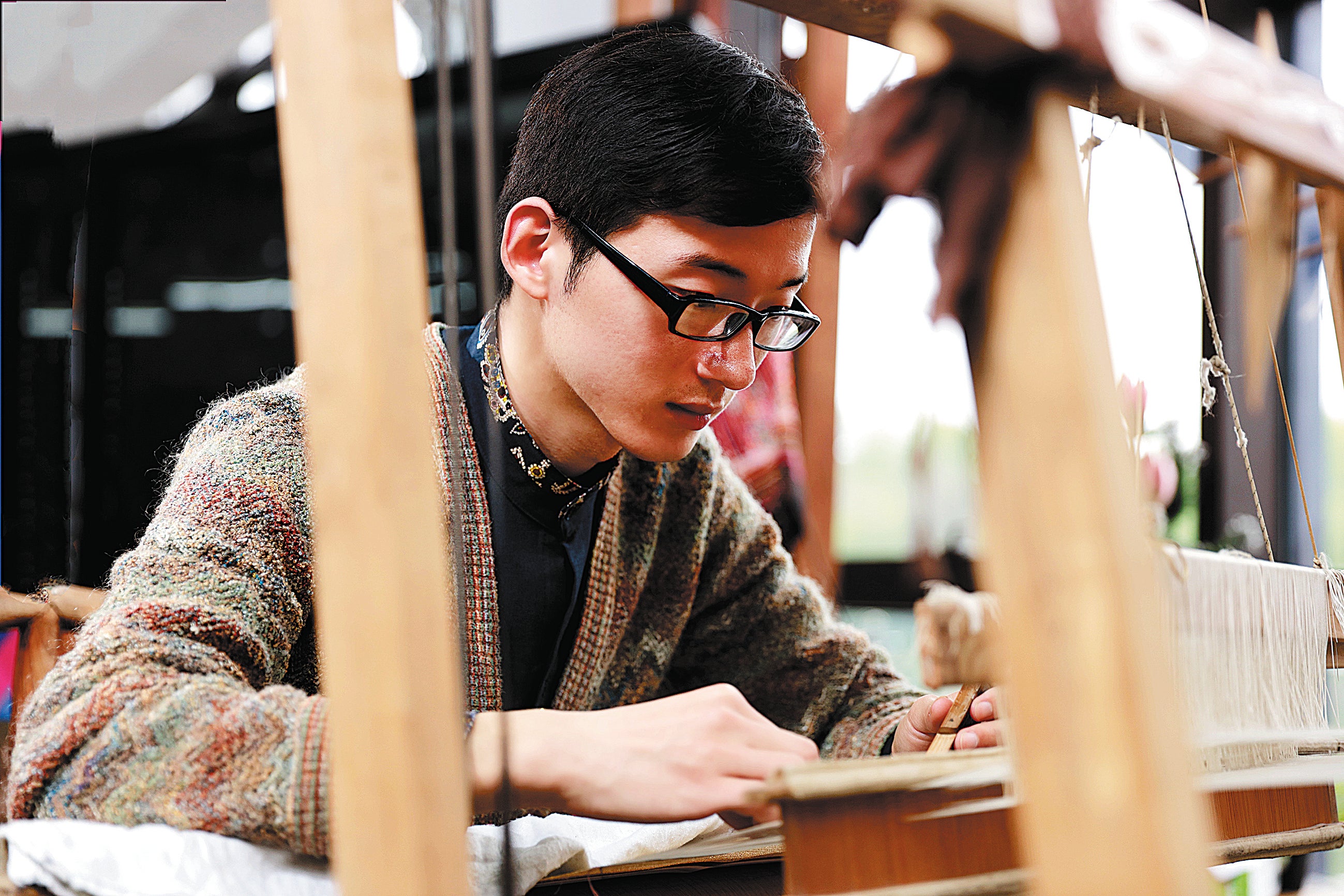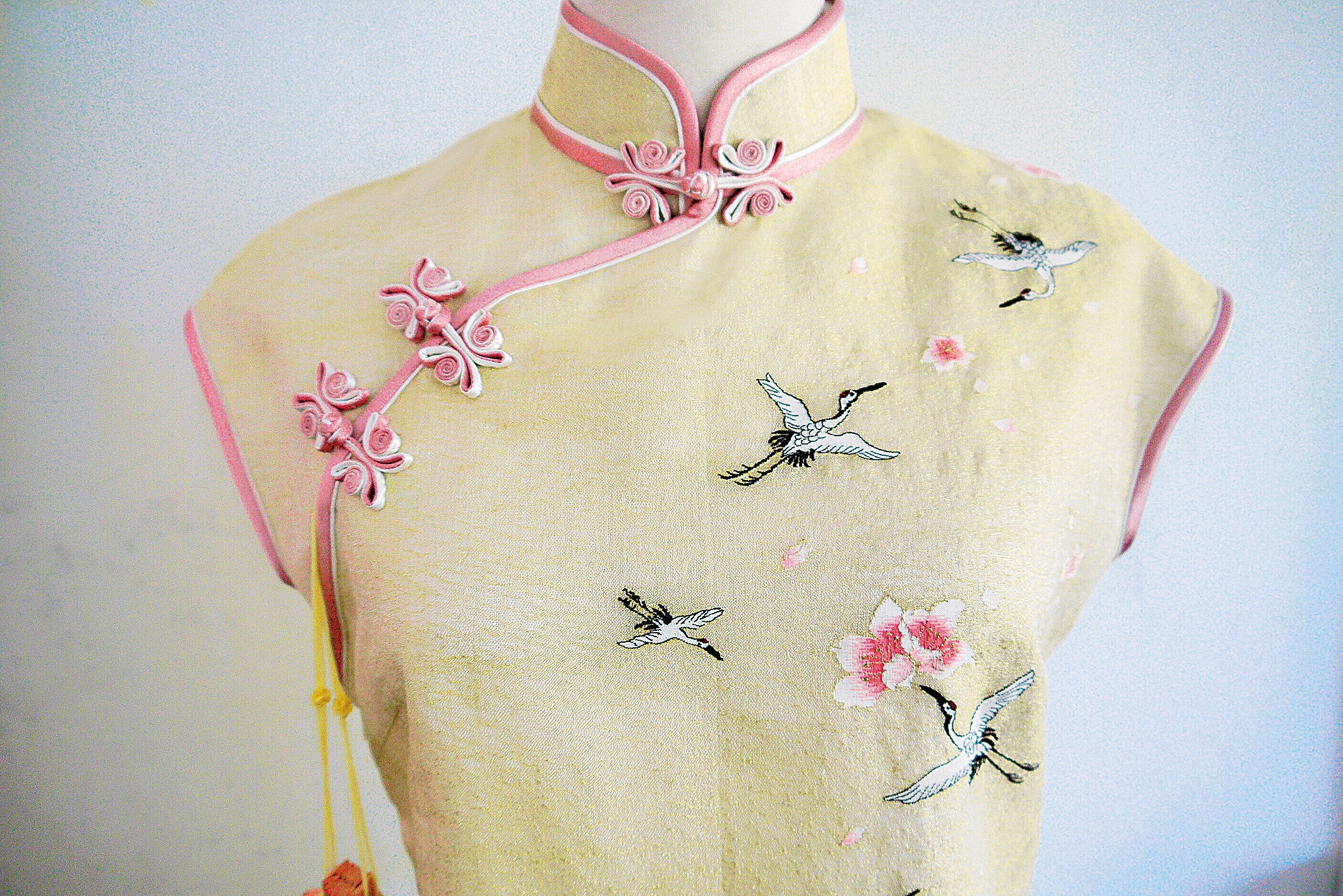A delicate thread from history
THE ARTICLES ON THESE PAGES ARE PRODUCED BY CHINA DAILY, WHICH TAKES SOLE RESPONSIBILITY FOR THE CONTENTS

Hao Naiqiang, 32, lives like a recluse at the foot of a mountain in the countryside near Taihu Lake in the city of Suzhou city in Jiangsu province.
“It’s away from the hustle and bustle of the outside world, better for me to concentrate the mind and explore kesi,” said Hao.
Kesi is silk tapestry with pictorial designs. It means cut silk and derives from the visual illusion of cutting thread, even some kind of effect of engraved relief, that is created by distinct, unblended areas of colour.
The earliest existing kesi products date back to the Tang Dynasty (618-907), but the technique first became widely used during the Song Dynasty (960-1279) and it became particularly popular during the Ming (1368-1644) and Qing (1644-1911) dynasties.
It is one of the very few weaving techniques that cannot be mechanised, and was added to the UNESCO list of Intangible Cultural Heritage in 2009.
“It was exquisite, just like an engraving,” Hao said. “You have to see how the shuttle constantly shifts horizontally and vertically and watch the kesi work come out of the loom to believe it.”

For kesi, raw silk is used for vertical threads and colourful boiled-off silk for horizontal threads. The vertical threads are continuous while horizontal ones are not. The colourful threads are woven to create various patterns. Held against the light, the patterns seem carved or engraved.
“It was simply magical,” Hao said.
Kesi had already been etched on Hao’s mind, albeit vaguely, when he learned about it by reading A Dream Of Red Mansions, a classic Qing Dynasty novel, in his early school years.
“In the book, kesi was described as splendid, and was exchanged as gifts among the wealthy, so I imagined that it must have been something extraordinary,” he said.
He has been fascinated by textile work since before college and he admires the water towns in the south of the country, he said. Because of this passion, he strove to study the weaving and dyeing art and design major at Soochow University. He was enrolled in 2009 after taking college entrance examinations three times.
“I love learning things that require a lot of handwork,” he said.
For the college’s graduation design exhibition in 2013 Hao surprised his classmates and professors by making a tea-table mat that integrated the kesi technique with decorations of willow branches, while his classmates all resorted to conventional fabrics.
As he sees it, the craft has evolved into a fusion of painting, calligraphy and hand-weaving or embroidering, so he will explore it from those perspectives as well.
The craft was used for robes, silk panels and scroll-painting covers, as well as for converting exact, whole traditional Chinese paintings into tapestries. Kesi products made their way to Europe during the Yuan Dynasty (1271-1368), where they were incorporated into cathedral vestments.
In 2015 Hao opened his own art studio. He explored possibilities of applying the kesi technique to various other contemporary items, creating bags, belts and home furnishings. In 2016 he teamed up with Sheme, a woman’s shoe brand in Chengdu, Sichuan province, and developed refined qipao, or cheongsam, dresses and delicate shoes with kesi elements, which became the centre of attention at Shanghai Design Week in 2016.
Hao and the artisans in his workshop can finish 10 majorkesi works a year, and they have been experimenting with applying the craft to other products, such as facial masks, and in restoring ancient paintings.
Previously published on Chinadaily.com.cn
